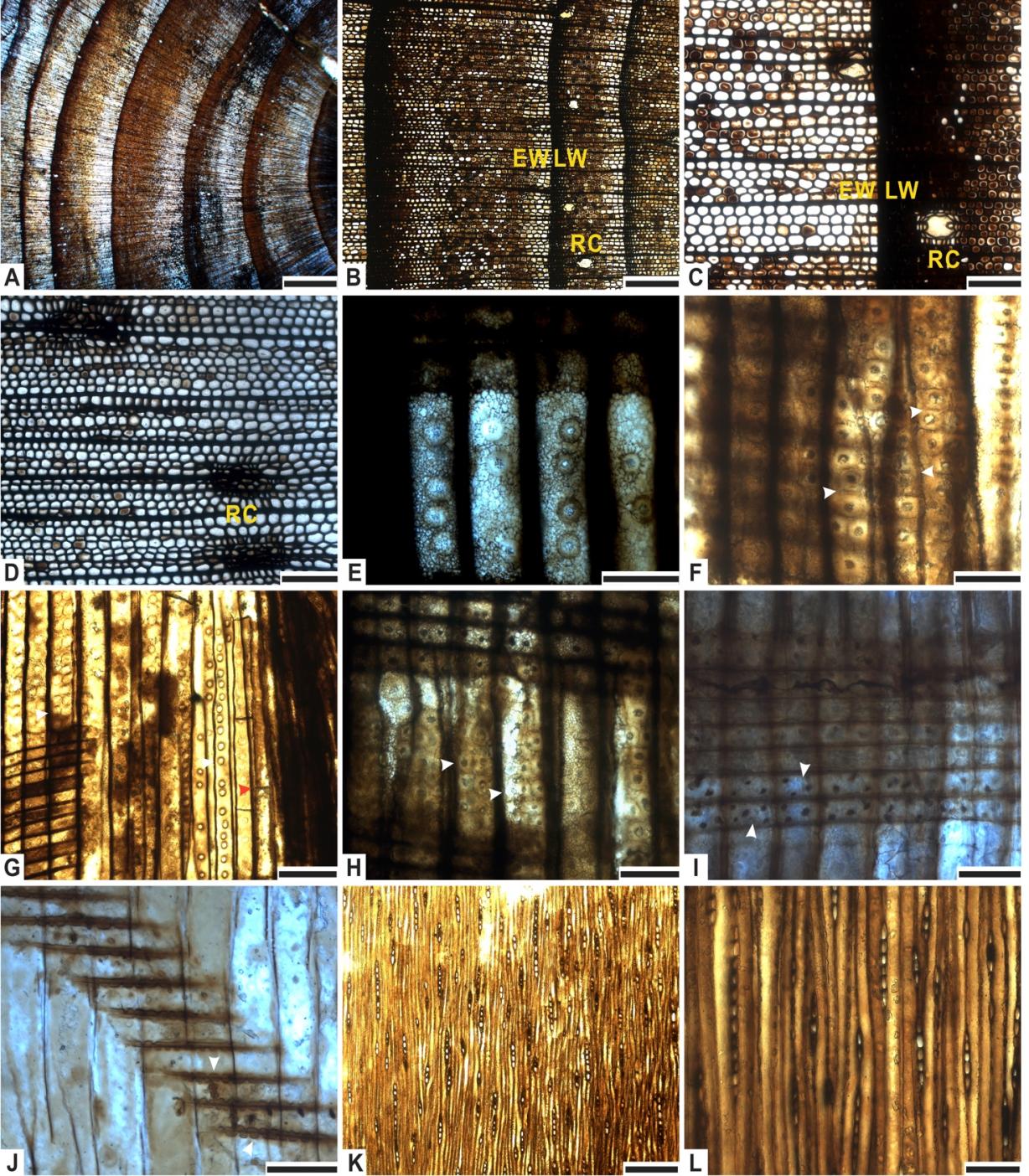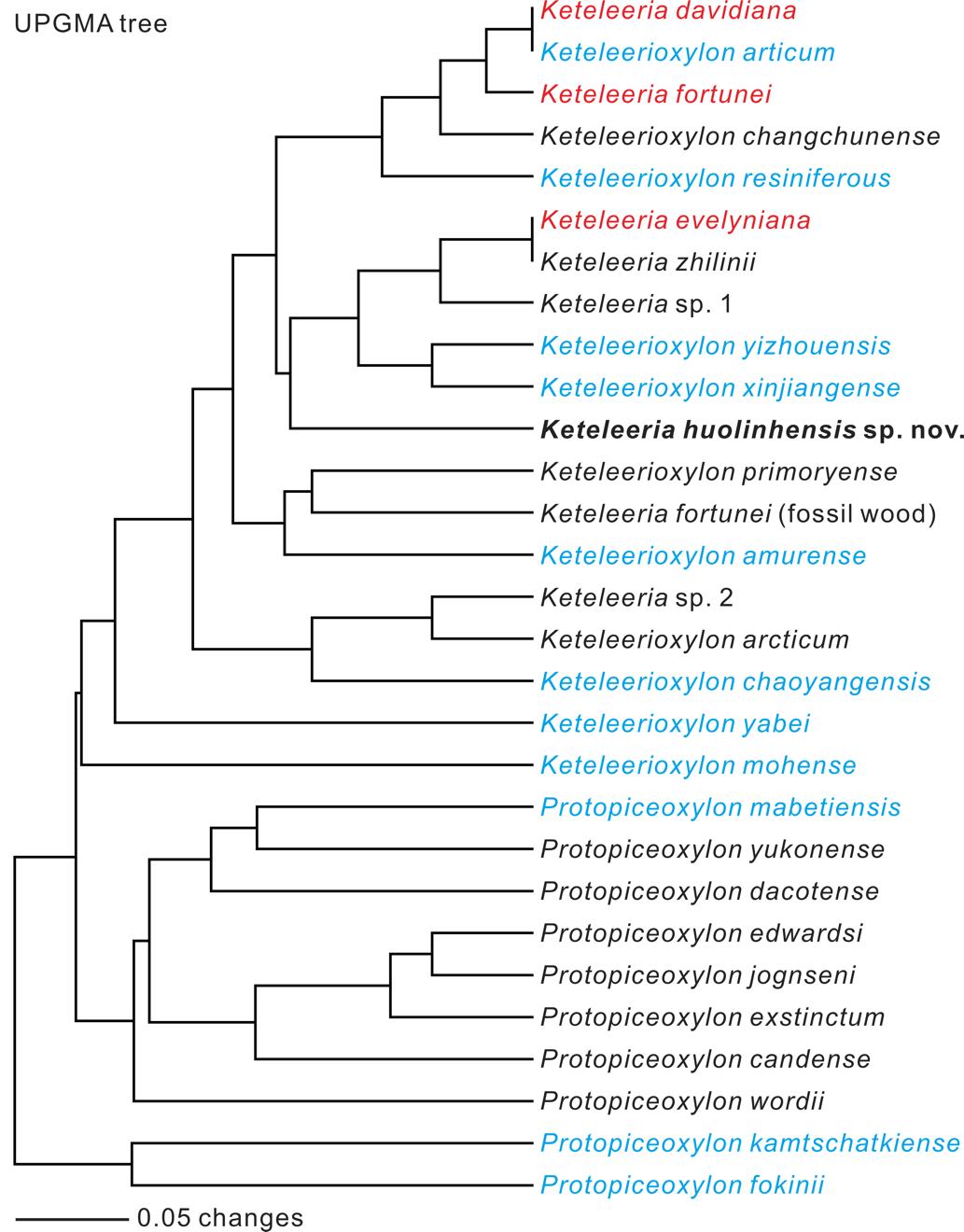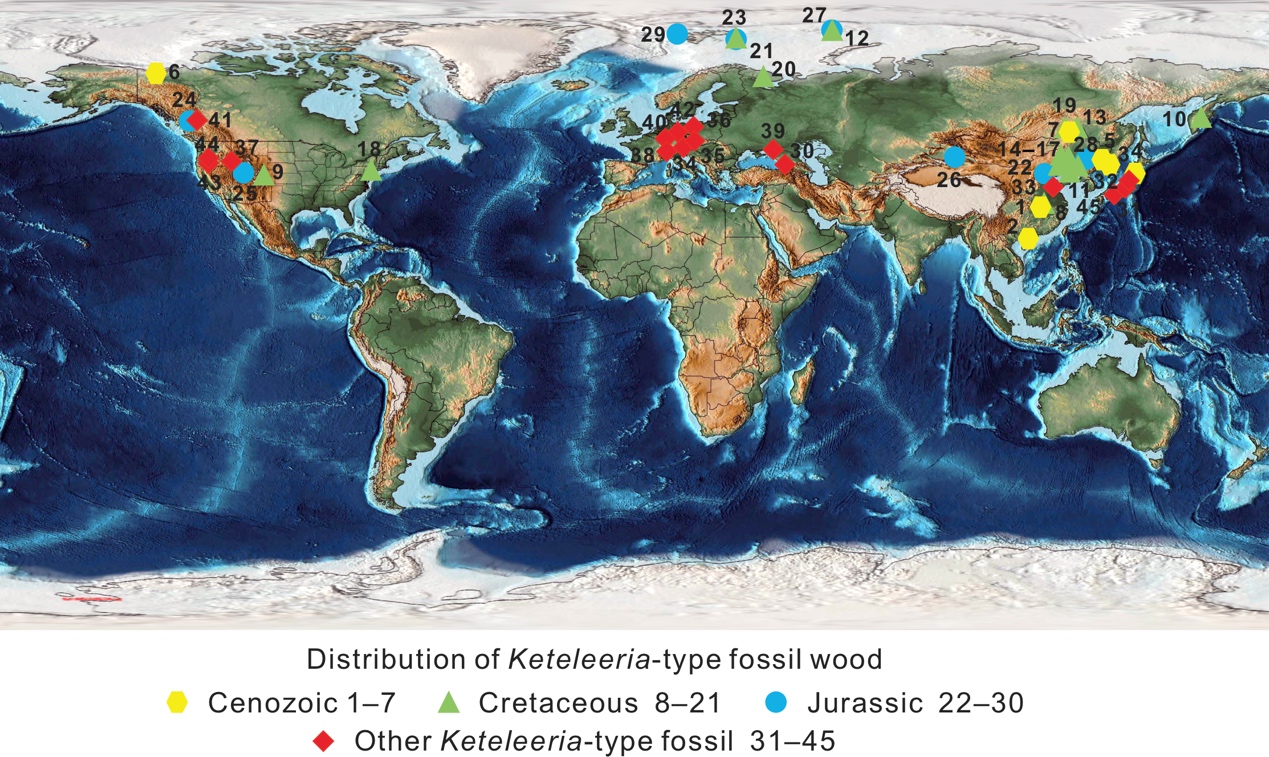Keteleeria Carrière (Pinaceae) is a small genus of evergreen conifer trees, with three to five extant species and six variants distributed across China, Laos, and Vietnam. Recently, a new species of conifer fossil wood, Keteleeria huolinhensis sp. nov., is reported from the Lower Cretaceous Huolinhe Formation in Inner Mongolia, China, approximately 126 million years ago, by a joint research team led by Prof. WANG Yongdong of Nanjing Institute of Geology and Palaeontology, Chinese Academy of Sciences (NIGPAS) and Prof. TIAN Ning from Shenyang Normal University.
This newly discovered fossil wood represents the earliest record of Keteleeria wood, and sheds light on its evolutionary history and palaeogeographical distribution ranges in the geological past. This study was recently published in the international journal Cretaceous Research.
“This new species is characterized by a heterogeneous pith, endarch primary xylem, the presence of axial resin canals, abietinean radial tracheid pitting, mostly taxodioid and occasionally cupressoid cross-field pitting, nodular horizontal and end walls of ray parenchyma cells, and uniseriate rays of 1–15 (mainly 1–8) cell height”,says WANG.
Cladistic analysis based on 12 morphological characteristics supports the assignment of Protopiceoxylon as the ancestral group of Keteleerioxylon and Keteleeria, reflecting the evolution of radial tracheid pitting from the mixed to abietinean type. Quantitative analysis of the growth rings indicated that K. huolinhensis sp. nov. is an evergreen tree with a Leaf Retention Time (LRT) of 1–3 years. The growth ring patterns in the present fossil wood specimen suggest that the Huolinhe Basin experienced a temperate climate with regular seasonal fluctuations, and relatively sufficient water supply during the Early Cretaceous.
A systematic compilation of fossil records related to the Keteleeria genus for paleogeographic distribution reveals its origin in the Middle Jurassic in Europe, evolving to North America and East Asia. The North American and European taxon became extinct, while the East Asian taxon continued to migrate and differentiate toward Southeast Asia. Currently, the Keteleeria genus is restricted to southeastern China, Laos, and northern Vietnam.
This study is financially supported by the National Natural Science Foundation of China, the Strategic Priority Research Program of Chinese Academy of Sciences, the State Key Laboratory of Palaeobiology and Stratigraphy, and the China Scholarship Council.
Reference: Zhu Yanbin, Li Ya, Tian Ning*, Wang Yongdong*, Xie Aowei, Zhang Li, An Pengcheng, Wu Zhenyu, 2024. A new species of Keteleeria (Pinaceae) from the Lower Cretaceous of Inner Mongolia, Northeast China, and its palaeogeographic and palaeoclimatic implications. Cretaceous Research, 156, 105805. https://doi.org/10.1016/j.cretres.2023.105805.

Fig. 1. The gross morphology (A, C) and pith structure (B, D) of the Keteleeria huolinhensis sp. nov. Scale bars: A, C = 2 cm, B = 10 mm; D = 1 mm.

Fig. 2. Anatomical characteristics of Keteleeria huolinhensis sp. nov. A–D. Transverse section, E–J. Radial section, K–L. Tangential section. Scale bars for A = 2000 μm, for B = 400 μm, for C, D = 200 μm, for K = 100 μm, for E–J, L = 50 μm.

Fig.3. Phylogenetic relationships of fossil Keteleeria huolinhensis sp. nov. and among living species (in red) and extinct species of Keteleeria-type fossil wood as resolved using morphological characters.

Fig. 4. The current geographical distribution of fossil locality that contains Keteleeria-type specimens from around the world.
Contact:
LIU Yun, Propagandist
Email: yunliu@nigpas.ac.cn
Nanjing Institute of Geology and Palaeontology, Chinese Academy of Sciences
Nanjing, Jiangsu 210008, China
Download:
